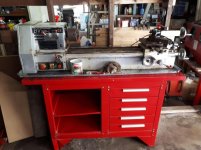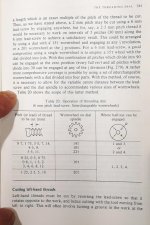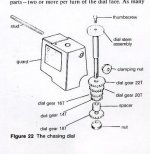With a 3mm pitch lead screw, you do not need a threading dial for the 1mm and 1.5mm threads. They will be synchronized at any place that you engage the half nuts. You literally can not get them wrong unless you remove and remount either the tool or the work.
I have not worked with a lathe with a metric screw, but I believe they usually have thread dials with some internal gearing. This is one of the things that proponents of the metric system do not talk about when they are bashing the English system which uses threads defined in threads PER inch and therefore has much simpler threading rules. I can attempt to give you some guidance for a simple dial that would work but may not be as convenient to use as the ones usually provided by the OEMs. The suggestions below assume a simple dial with the gear and the dial on the same shaft with no additional gearing between them.
The 1.25mm thread will synchronize at multiples of 5mm (1.25mm x 4 = 5mm) that are evenly divisible by 3mm. So you would need a gear that would allow you to travel one of those distances (15mm, 30mm, etc.) The obvious one seems to be 15mm and you would get that with a 5 tooth gear. That's too small. 10 teeth would give you a 30mm distance and that may be workable. If you have an even number of divisions on the dial face, you would be able to engage the half nuts on two of those lines that are 180 degrees apart as they would represent distances of 15mm.
Likewise the 1.75mm thread will synchronize at intervals of 7mm (1.75mm x 4 = 7mm) that are evenly divisible by 3mm. A 7 tooth gear would provide a 21mm distance (3 x 7mm) but I don't know if that would be practical. You may have to go to 14 teeth for a distance of 42mm. With 14 teeth for a distance of 42mm, if you have an even number of divisions on the dial face, you would be able to engage at two of them that are 180 degrees apart. So the same dial would work for both of the threads that you mention that actually need a threading dial.
You can work out other gears for additional thread pitches in a similar manner.
If you use these suggested gears you will have to wait a bit for the synchronization points. It may be faster to just leave the half nuts engaged and back up the spindle. That will work for all threads.
I would appreciate it if someone can check my logic and figures above.
Hi Guys,
New here and looking for some help please. I recently bought my first metal lathe and it is a Chinese made one that came with no thread chasing dial. I restore vintage tractors, engines and mowers and from time to time need to make some nuts and bolts. I have searched high and low to buy a dial to suit but found I need a couple of different size gears to do the common metric size threads I need.
So what I need to know is for a lathe with a 20mm OD lead screw with a 3mm pitch;
What size gears do I require to make 1mm, 1.25mm, 1.50mm & 1.75mm metric threads?
thanks in advance for any and all help.
Cheers Cobbadog.








